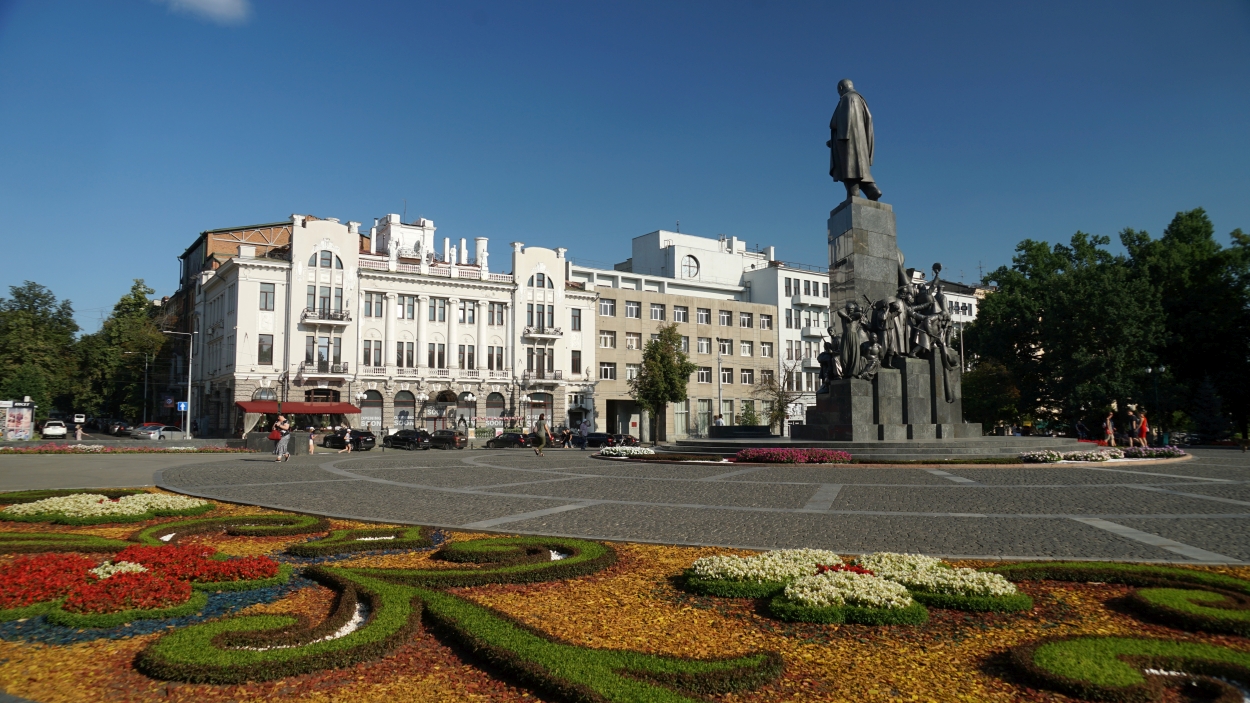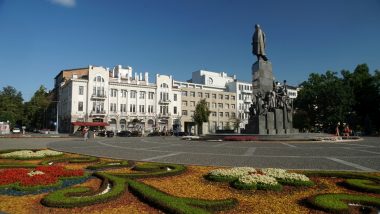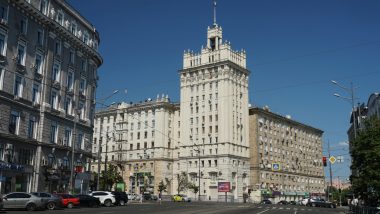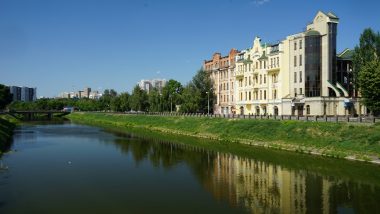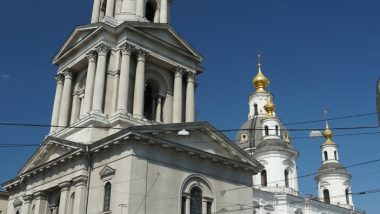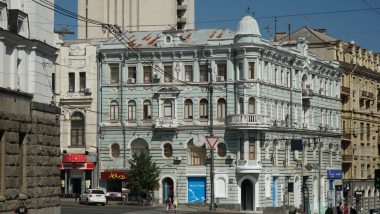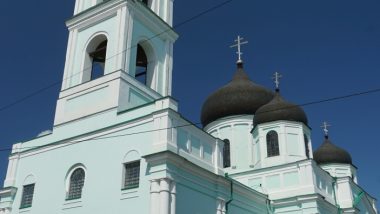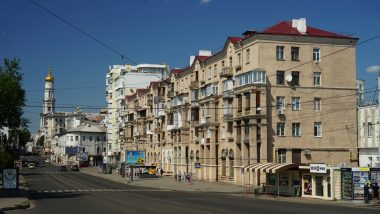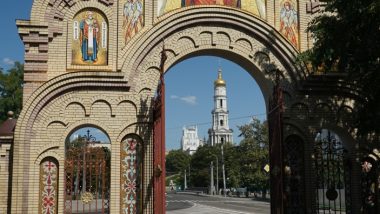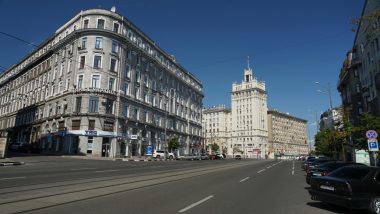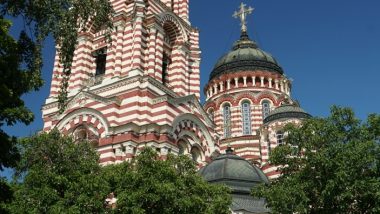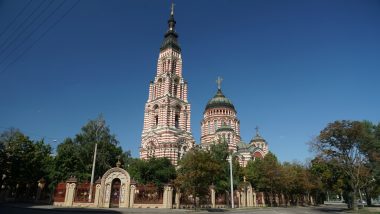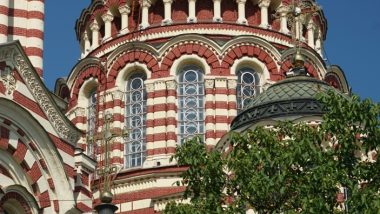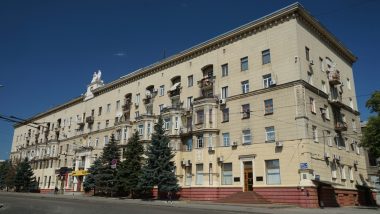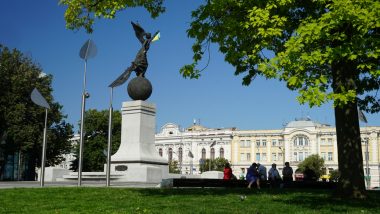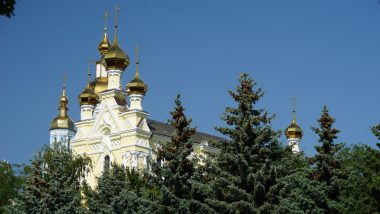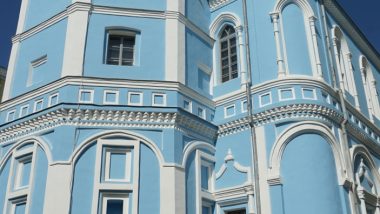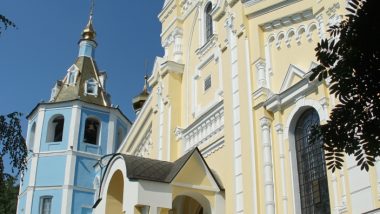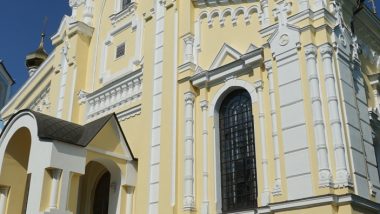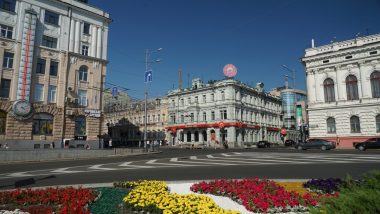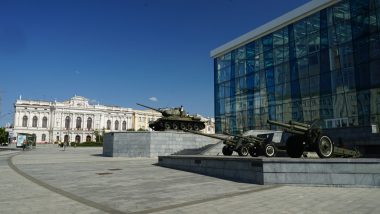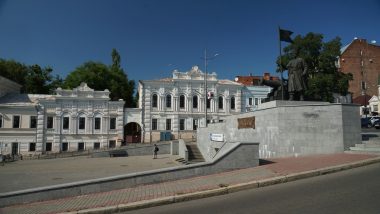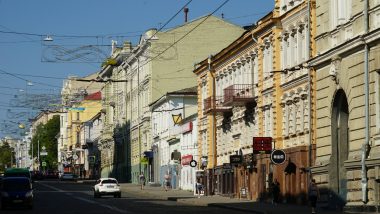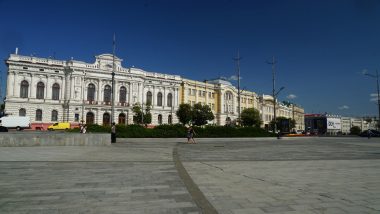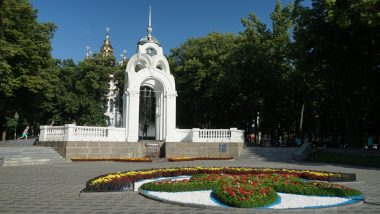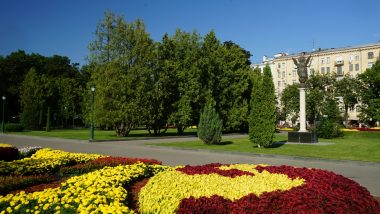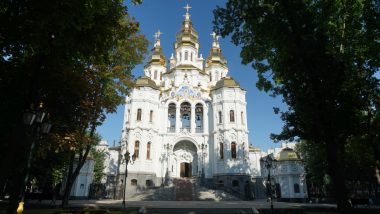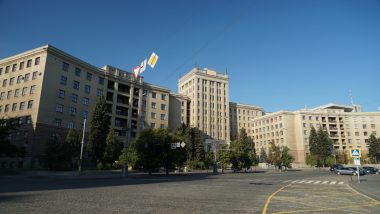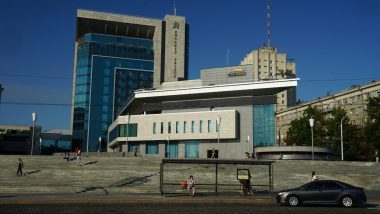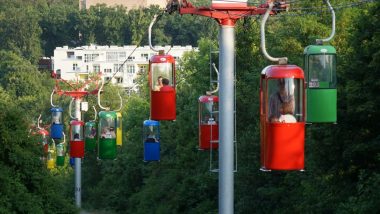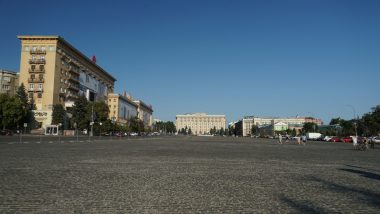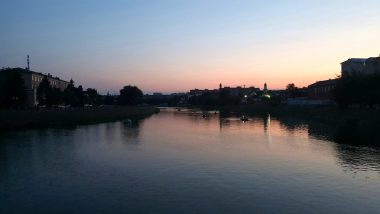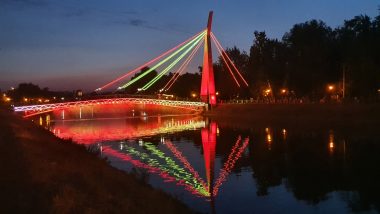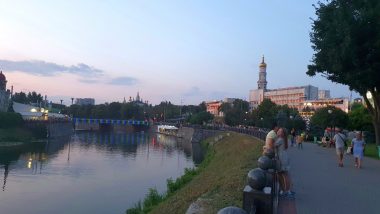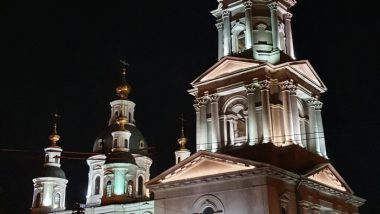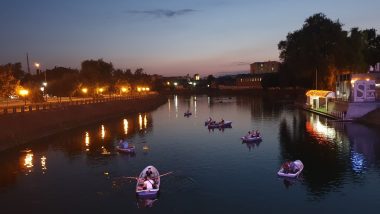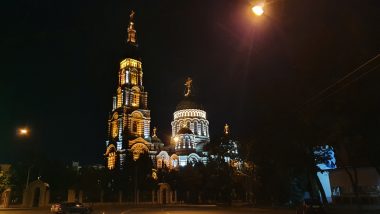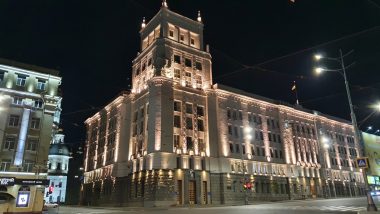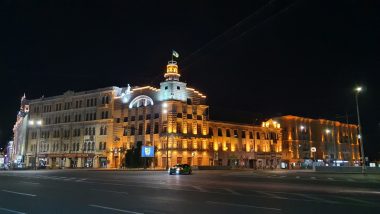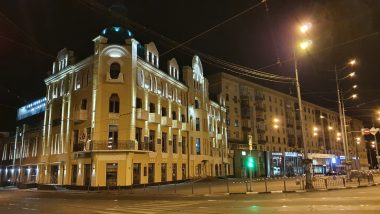We have parked in the center of the Kharkiv next to the river, just 40km from the Russian border. The city is home to Russian-speaking intelligentsia – scientists and engineers who turned it into the brain center of the Soviet defense industry in the 1960s. Their grandchildren are now reinventing it as a hub of Ukraine’s fledgling IT industry, with an active rock-music scene and a sprouting hipster culture. The city lies at the confluence of the Uda, Lopan, and Kharkiv rivers. It was founded about 1655 as a military stronghold to protect Russia’s southern borderlands. Its nodal position was enhanced in the later 19th century by opening the adjacent Donets Basin coalfield, first reached by rail from Kharkiv in 1869. At that period Kharkiv’s own industries, especially engineering, grew rapidly. After the Russian Revolution of 1917, Kharkiv was made the first capital of the Ukrainian S.S.R. but lost this function to Kyiv in 1934. In World War II this key junction was bitterly contested and changed hands several times, with very heavy destruction. There are few historical buildings left – 17th-century Pokrovsky Cathedral, the 19th-century Patriarchal Cathedral, and the belltower commemorating the victory over Napoleon I in 1812. The rest of the city is Soviet monumentalism in all its glory. The main square – one of the world’s widest squares lost Lenin’s monument just in the tumult of 2014. In the evening we had a good dinner in Probka – restaurant and club (Beef in cream sauce with potato pancakes 185 UAH, Tomato tartar salad 135 UAH, Local craft beer 50 UAH / 0,5 l), after that we took a drink (Cuba Libre 110 UAH) in a famous and trendy Moskvich bar, at the end we have visited large Bolero Club (entrance 400 UAH, Bacardi Coke 100 UAH). The next day we took a tasty dinner in stylish Fabrika.
Parking location – Kharkiv: 49.984838N 36.229382E


